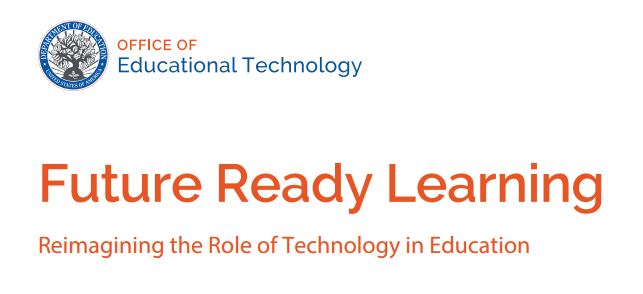“The National Education Technology Plan is the flagship educational technology policy document for the United States. The 2016 Plan, Future Ready Learning: Reimagining the Role of Technology in Education, articulates a vision of equity, active use, and collaborative leadership to make everywhere, all-the-time learning possible. While acknowledging the continuing need to provide greater equity of access to technology itself, the plan goes further to call upon all involved in American education to ensure equity of access to transformational learning experiences enabled by technology.”
The NETP touches on five key areas that must be addressed if we are to truly support student learning in today’s world. While this plan is written (and even titled) with a focus on technology, Learning is at its core.
We once lived in a society, in a world, where “learning” — and by this I primarily mean content— was scarce. The knowledge and information was typically found in libraries and educational institutions. This knowledge was served and consumed in these spaces. With the advent of the information age and the rise of the Internet, such knowledge and learning became more and more accessible. We are at the point now where knowledge is an easily accessible commodity, and most of us carry around that access in our pockets.
But content knowledge is only the first level of Learning that we need to be focusing on. The NETP does a good job of addressing the need to look beyond such low hanging fruit and begins to hone in on the other facets that make up Learning — such as agency, non-cognitive competencies, and soft skills that are necessary for all learners to find success in and out of school.
The NETP’s focus is on technology and transforming learning, but its goal is to do this while providing greater equity and accessibility. We must provide all students with access to greater educational opportunities that help close gaps and remove barriers. Technology cannot do this alone. It takes the human element to make this happen.
The NETP is a big plan. It’s a lot to read. It’s a lot to digest. It’s a lot to put into action. One of the mottos for my team and for our professional development for the 16-17 school year is going to be, “Start small. Start now.” Change does have to come in huge waves. It can start with small ripples.
My team and I have been reading bits and pieces of the plan and have been convening a few times a month to discuss what we are learning. Each time we come together to speak about the NETP, we come with three questions answered:
- What is something new you learned?
- In which areas are we already doing well?
- In which areas are do we need to improve?
These questions and their corresponding answers help guide our conversations. It has been enlightening to discuss Learning with a team of IT professionals. While many have spent most of their career working in a school district, they haven’t had opportunities to discuss their opinions on Learning and the effects of their efforts on the classroom. It has been very refreshing to know that my team is so passionate about student learning.
So far we’ve only made it through the first two sections, but it’s a start – a small start. This start, however, is guiding an overarching goal making process for the upcoming school year. Like any other team, we have areas in which we can improve and areas of excellence that need to be celebrated. Our study of the NETP will help us find those gaps and recognize our successes. The hope is to share the goals and highlight our achievements with the rest of the district in an effort to share more of what we do behind the scenes. I’m loving the process and I know my team at Redmond School District appreciates it to.
Jeremy is the Director of Technology and Innovation for Redmond School District in Central Oregon. He taught a number of elementary grades and was an instructional coach for many years before moving into his most recent role. Just last year, Jeremy worked with the US Department of Education and the Office of EdTech to help revise the National Education Technology Plan and continues to share the plan and its message with districts across the country.


